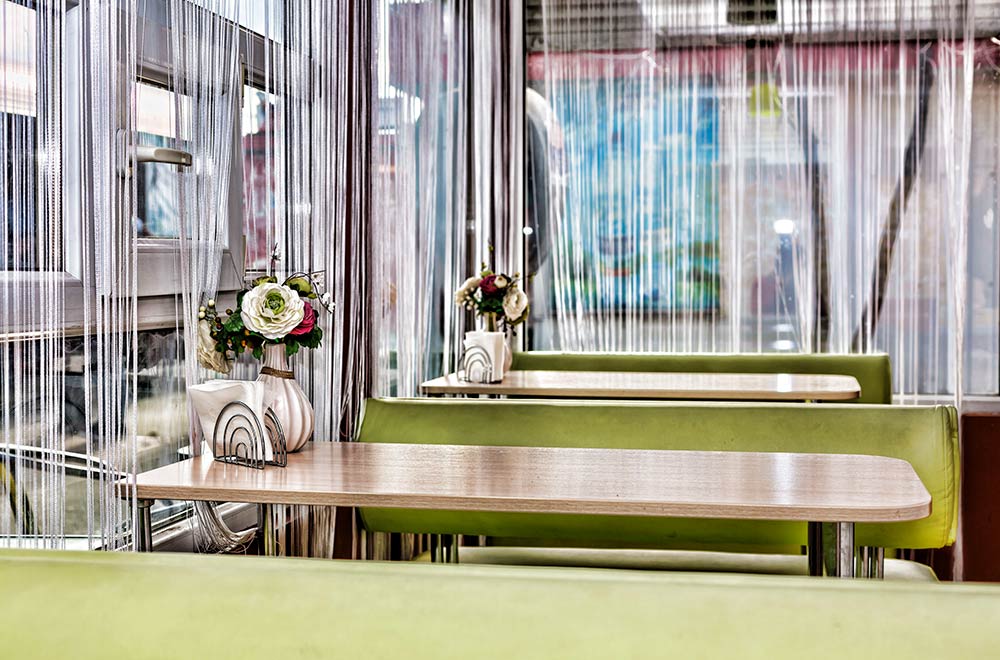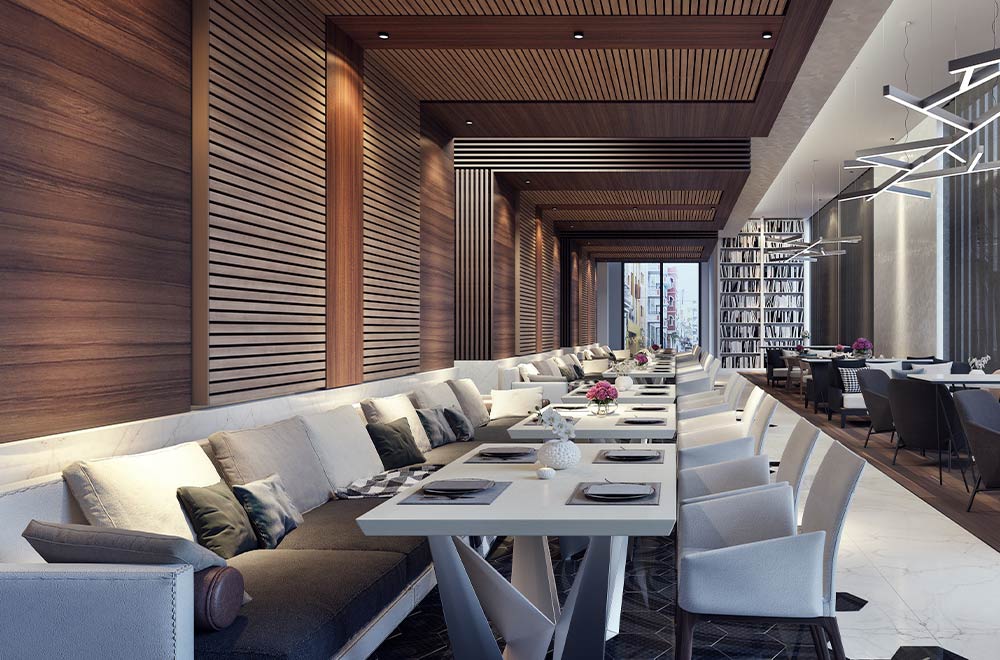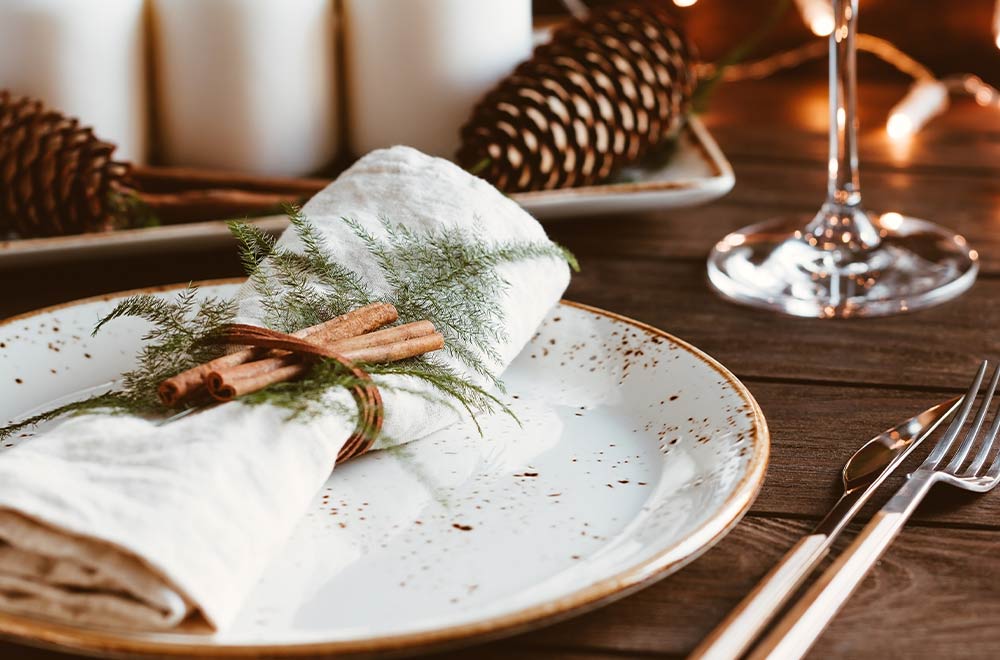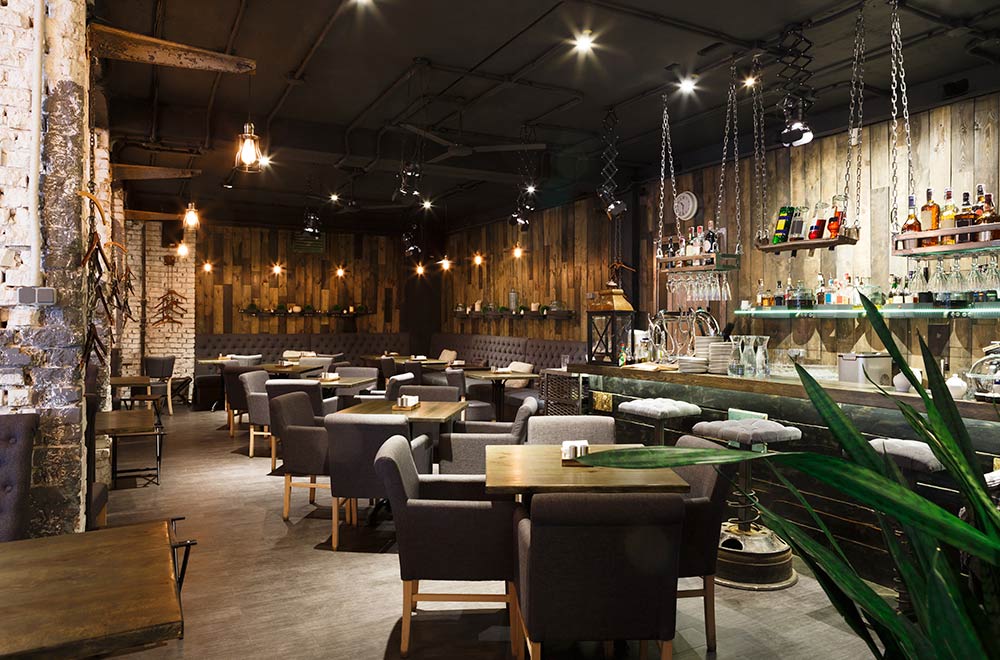People sometimes can’t quite put their finger on what makes a particular restaurant their go-to spot for spending a night out with friends and family. Sure, excellent food, drinks, and service play a part, but it’s often more about the feeling that washes over a guest as they walk through your door (and resonates long after they leave) that keeps them coming back for more. What’s the secret? Ambiance. Creating a restaurant ambiance that connects with your guests, and reflects your brand, is often the difference between a one-time visitor and a loyal customer.
Some of the more important elements for restaurant owners to consider when it comes to designing an appealing environment include color scheme, floorplan/table design, music, and décor.
Color schemes
Color plays an enormous role in establishing your restaurant’s overall feel. You should choose your prominent colors wisely as each one has the ability to elicit a different emotion from your diners.
Brown
Shades of brown usually prompt feelings of naturalness, healthfulness, and freshness. If your aim is to project a down-to-earth, homegrown vibe, opt for neutral colors like brown and tan — with green accent colors to bring in some life. As the color of wood and earth, brown also exudes feelings of security, warmth, and stability.
Blue
Tranquility, peace, and honesty are all cornerstone emotions of the color blue. Many people associate images of the sea and sky with hues of blue, leading to an environment that feels open and relaxing. One thing to keep in mind, however, is that while the color can help put diners at ease, it should be used in moderation since blue shades may not necessarily complement the colors of your food.
Gray
Variations of gray are starting to pop up in the interior décor of many modern restaurants. Grays inspire feelings of calm, balance, and sophistication, which explains why you tend to see these colors in more upscale and fine dining environments. These contemporary tones also make great backdrops for more vibrant feature/accent colors. For example, if your restaurant has gray walls and neutral tables, consider adding green, navy, or gold chairs in a luxe material (like velvet) to make the space really pop.
Orange
Looking to evoke feelings of adventure, enthusiasm, and happiness in your restaurant? Try featuring different hues of orange. With shades ranging from light and bright to deep sunset and pumpkin tones, this vibrant color pairs well visually with many different types of food, as well as numerous other colors that you may want to incorporate in your décor. Another benefit of orange? Color psychology experts say the color can induce a sensation of hunger, which may help inspire guests to order an extra appetizer or dessert.

Floorplan and table designs
Your restaurant’s floorplan and table designs can impact your guests’ subconscious and emotional experience while dining in your space. The design goal with these two components is to find a balance between functionality and aesthetic. As you’re probably aware, booths are a crowd-pleaser for guests, encouraging them to spread out and get comfy. They also don’t take up much space when compared to a traditional table setup, allowing your servers to move about more easily. Placing booths on the outer wall areas of your restaurant can open up the center of your floor. This produces an airy, comfortable ambiance for diners that helps them feel less crowded and more relaxed.
Long group-style tables with benches are also becoming increasingly popular in more casual spots. This type of layout encourages different parties to mingle and sit together, creating a carefree, social, and lively atmosphere. At the same time, it adds a streamlined look to your restaurant’s overall floorplan. Other places are enticing guests to put their feet up and stay a while by incorporating lounge seating, such as sofas and oversized armchairs that flank a coffee table. This more upscale setup cultivates an ambiance of community, sharing, and openness making customers feel that they’re right at home in their own living rooms.
Bar seating is its own beast, with a variety of table options. High-top tables with stools or high-back chairs are commonplace in restaurant bars, offering flexibility for varying party sizes that might walk through the door. In addition, some guests prefer to enjoy their food and drinks at the actual bar. This can be due to the fact that bar-style seating can exude a more casual, laidback, and friendly atmosphere for those diners that want a quick bite or drink before being on their way. The key to bar tables and seating is to ensure that it can accommodate numerous party sizes, while being conducive to your servers running food and drinks.

Music
Just like your colors and table designs, music plays an important role when it comes to creating an overall ambiance for your restaurant. Choose music that reflects your brand and the image you want to project. This creates a cohesive experience for guests.
It’s also crucial to understand who your customer base is before selecting your tunes. For example, if you own a casual sports bar, playing the top hits will likely create an appealing atmosphere for guests. However, if you manage an upscale bistro, mellower tunes that blend into the background and allow customers to easily converse is more likely to strike the right note. If you’re not sure what type of music would best fit your aesthetic, consider hiring a consultant who specializes in selecting playlists for restaurants.

Décor
Think of your space’s décor as the finishing touches and nuanced design elements that tie the entire space and atmosphere together. Add details that merge nicely with your brand and the feeling you want to convey in your space. For example, if your restaurant touts farm-fresh ingredients, featuring subtle touches of plants, flowers, and greenery can be nice. Or, if you’re known as the neighborhood hot spot, displaying local artists’ artwork on your walls can raise your cool cred while also supporting the community.
A restaurant’s lighting elements are also a crucial part of creating the desired ambiance. Consider if subtle lighting, brighter lighting elements, or intricate light fixtures will best fit your restaurant’s concept and the mood you want to invoke. One easy way to make a space feel inviting and intimate is by adding candles.
Your bar area is also a place you can have a bit more fun with your design elements. Look into unique ways of displaying liquor and craft cocktail ingredients, possibly with shelving systems or storage pieces that go with your look. Remember, no detail is too small when it comes to curating how your restaurant is going to make you, your staff, and your guests feel.
For ideas on how to spruce up your restaurant’s look on a budget, check out our free e-tool “12 ways to fix up your restaurant for under $1,000.”






